CMPT 371: Data Link Layer and Ethernet Overview
1/170
There's no tags or description
Looks like no tags are added yet.
Name | Mastery | Learn | Test | Matching | Spaced |
|---|
No study sessions yet.
171 Terms
Point-to-point
A communication link between two devices.
Null modem
A communication method that allows direct connection between two devices without a modem.
RS 232
A standard for serial communication transmission of data.
Multipoint
A communication link that connects multiple devices.
Ethernet
A widely-used networking technology for local area networks (LANs).
Token Ring
A network protocol that uses a token-passing method for data transmission.
Transmission Mode
The method by which data is transmitted over a communication channel.
Simplex
A transmission mode where data flows in one direction only.
Half-duplex
A transmission mode where data can flow in both directions, but not simultaneously.
Full-duplex
A transmission mode where data can flow in both directions simultaneously.
Topology
The arrangement of different elements (links, nodes, etc.) in a computer network.
Mesh
A network topology where each device is connected to multiple other devices.
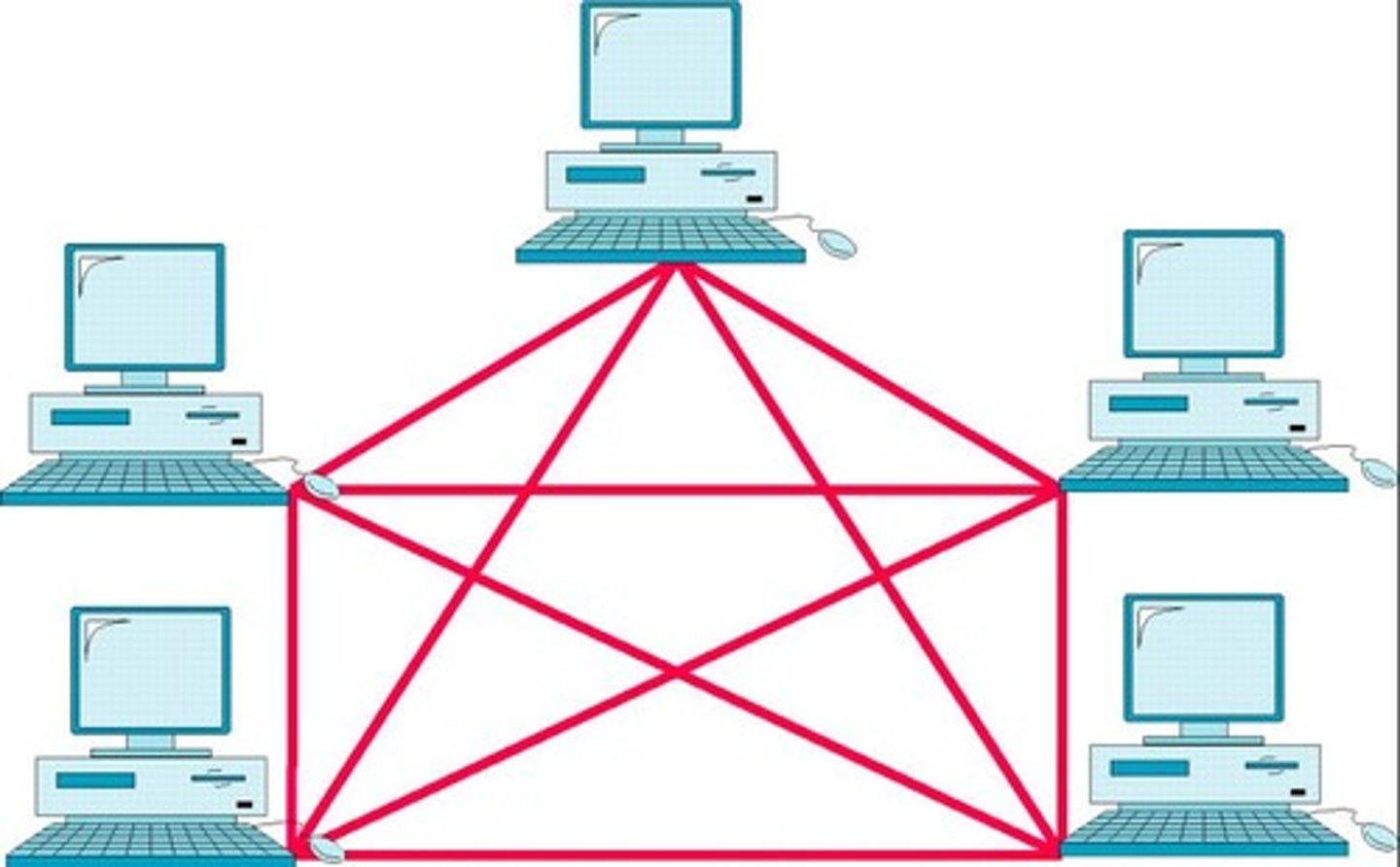
Star
A network topology where all devices are connected to a central hub.
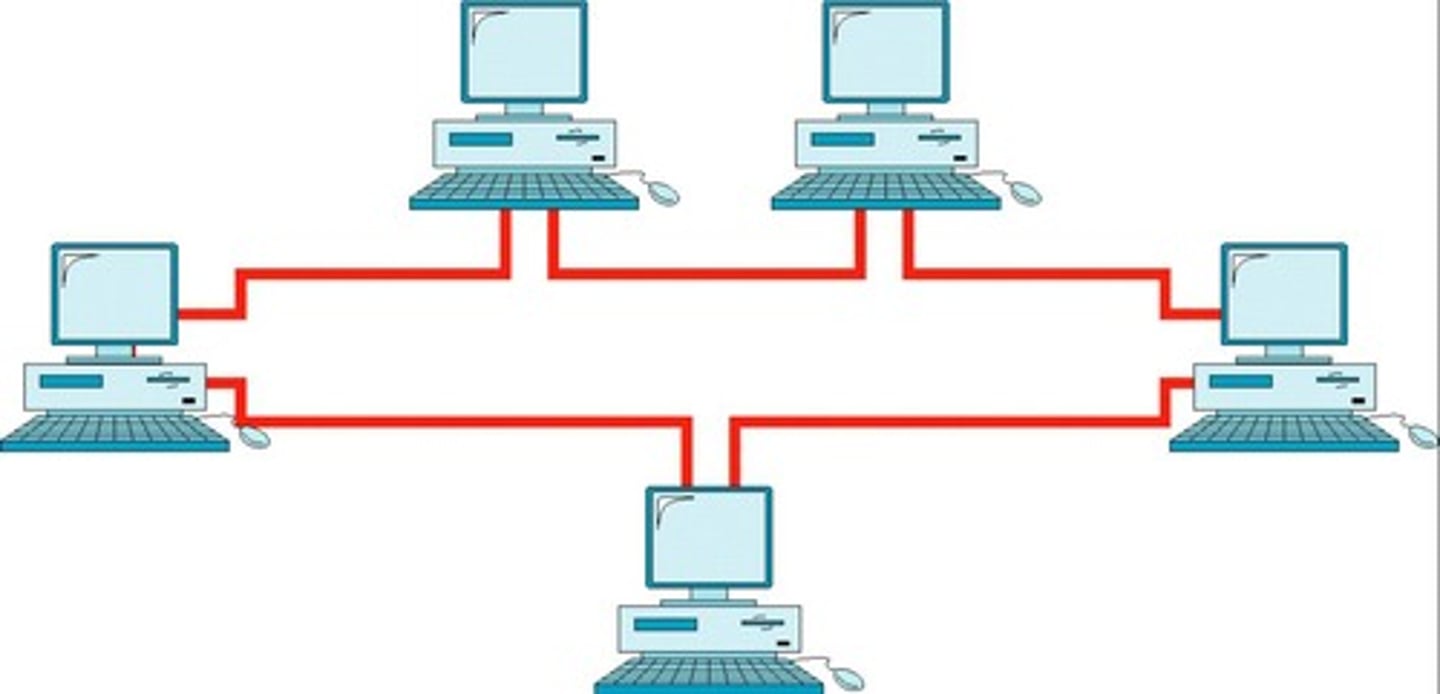
Tree
A network topology that combines characteristics of star and bus topologies.
Bus
A network topology where all devices share a single communication line.

Ring
A network topology where each device is connected to two other devices, forming a circular pathway.
Hybrid
A network topology that combines two or more different types of topologies.
Data Link Layer
The layer in the OSI model responsible for node-to-node data transfer.
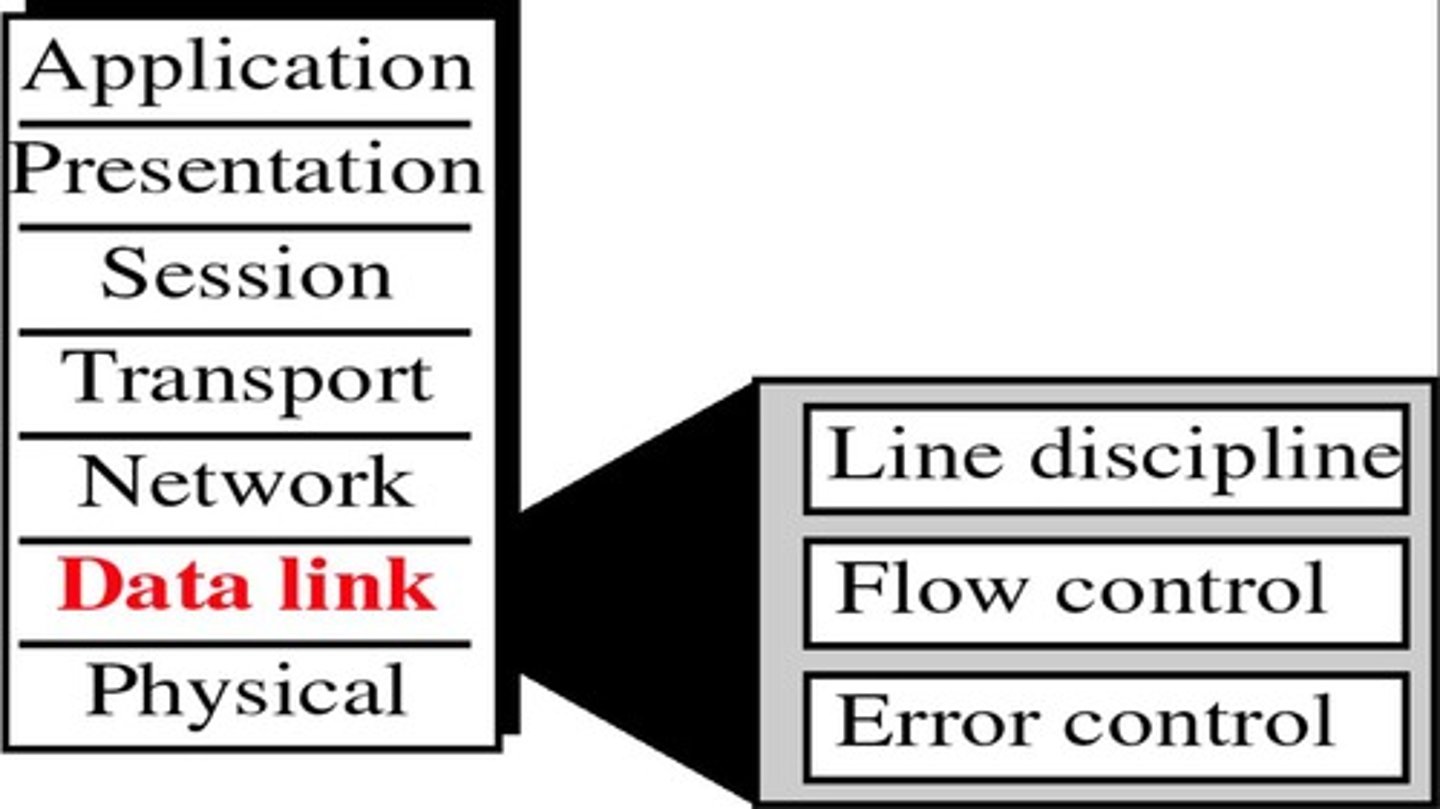
Line Discipline
The rules that determine how devices on a communication line interact.
ENQ/ACK
A method of communication where a sender requests acknowledgment from the receiver.
CSMA/CD
Carrier Sense Multiple Access with Collision Detection, a network protocol for managing data transmission.
Stop and Wait Flow Control
A flow control method where the sender waits for an acknowledgment after sending each frame.
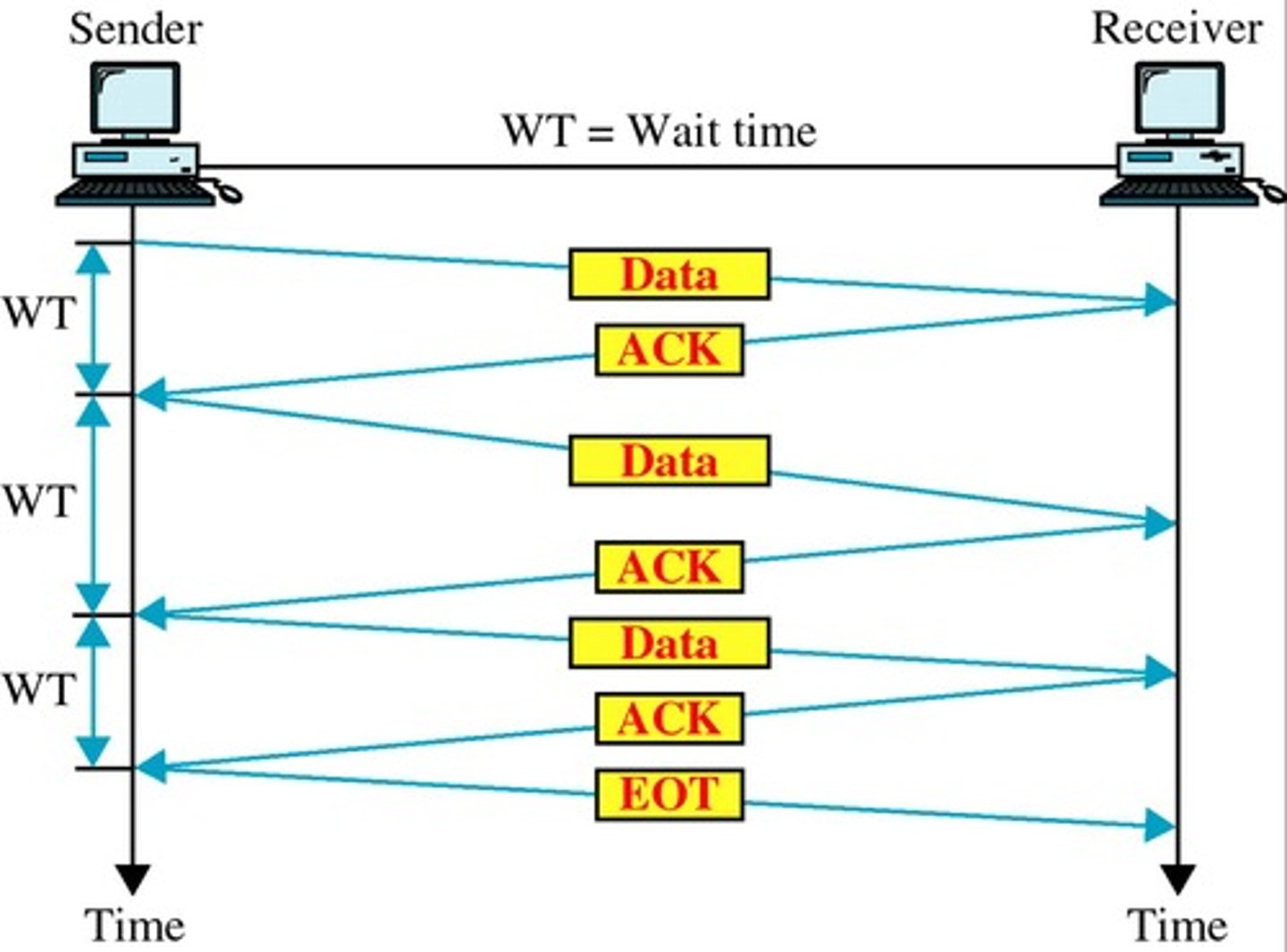
Sliding Window
A flow control method that allows multiple frames to be in transit before needing an acknowledgment.
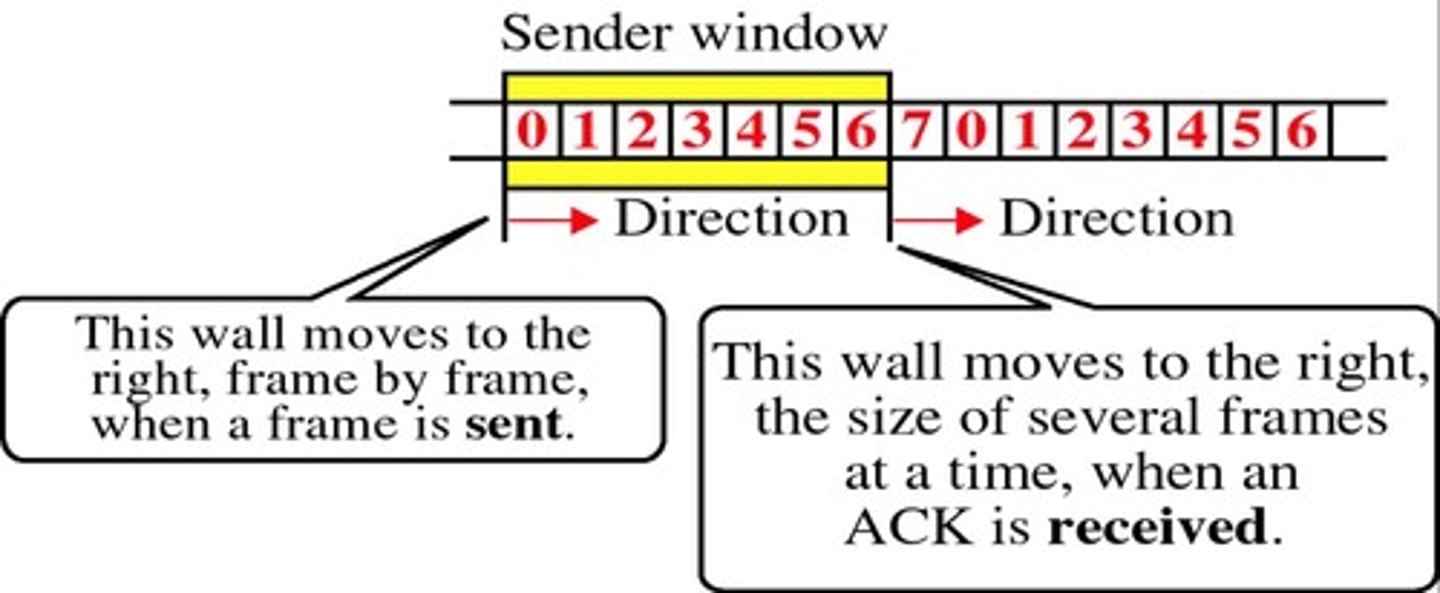
Error Control: Stop-and-Wait
A method of error control that requires acknowledgment for each frame sent.
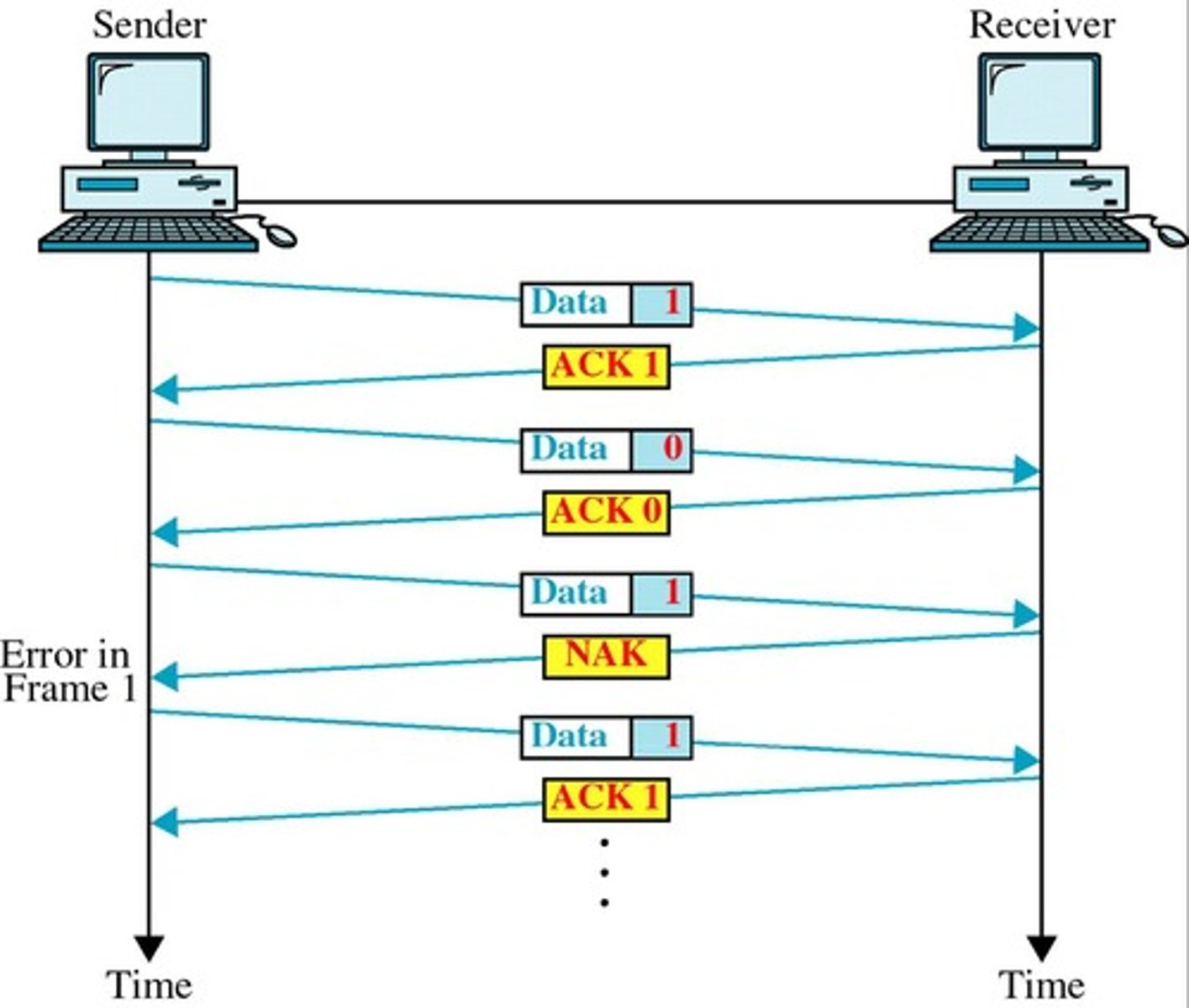
Error Control: Go-Back-N
A method of error control where the sender can send multiple frames but must retransmit from the last acknowledged frame upon error.
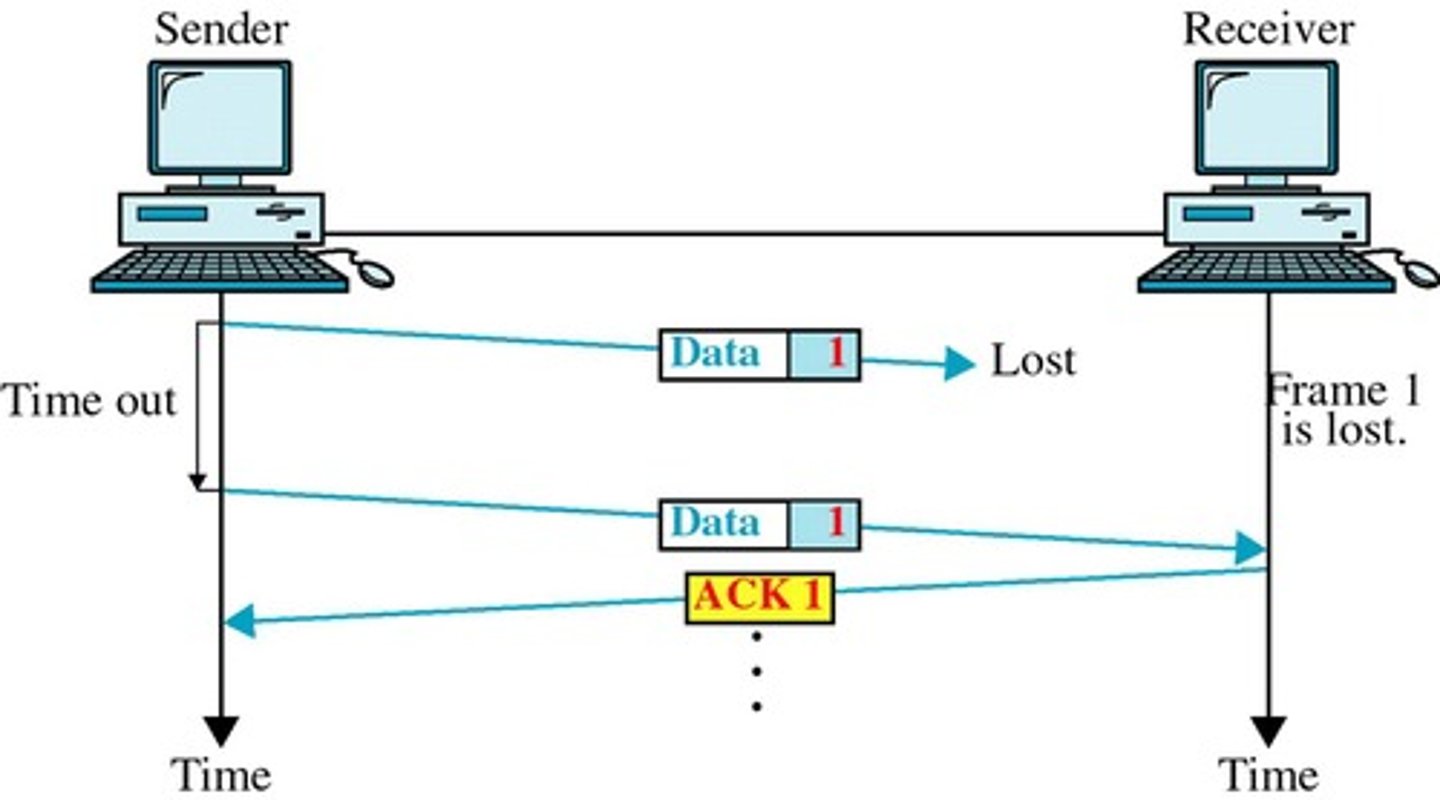
Error Control: Selective Reject
A method of error control that allows only the erroneous frames to be retransmitted.
Repeater
A device that regenerates and amplifies signals in a network.
Bridge
A device that connects two or more network segments and filters traffic.
Multiport Bridge
A bridge that connects multiple network segments.
Router
A device that forwards data packets between computer networks.
Gateway
A device that connects two different networks and translates communication between them.
Ethernet Ubiquity
Until 2010-2013, it was the most ubiquitous type of LAN. Now overtaken by WiFi in the consumer market. Still the dominant LAN in enterprise and high-performance networks.
Ethernet Transmission Speeds
Supports transmission speeds from 3 Mbps to 100 Gbps.
Logical Link Control (LLC)
Specified in IEEE 802.2, responsible for multiplexing/demultiplexing, flow and error control.
LLC Services
Includes Unacknowledged connectionless service (mandatory), Acknowledged connectionless service (optional), Connection-oriented service (optional).
Medium Access Control (MAC)
Constructs the frames and transmits them over the physical layer.
Maximum Cable Length
Each version of Ethernet has a maximum cable length per segment over which the signal will propagate.
10Base5
Allows maximum 5 segments connected with 4 repeaters, each segment no longer than 500 meters (10 μs round-trip time).
Manchester Encoding
Data is sent using Manchester encoding where a logical '1' is transmitted by a high-to-low transition and a logical '0' is transmitted by a low-to-high transition.
Signal Levels in Manchester Encoding
Low and high are, respectively, -0.85V and +0.85V.
Collision of Signals
In classic Ethernet, if two or more stations transmit at the same time, their signals will mix (collision) resulting in garbage.
Jamming Signal
4 or 6 bytes of a random pattern of bits that disrupts the CRC so all stations know to discard what they received.
Binary Exponential Backoff
After i successive collisions, a random number between 0 and 2i-1 is chosen, and the station waits for that many time slots.
Time Slot Duration
A time slot is equal to one complete round trip time, which is 51.2 μs.
Collision Handling
After 10 successive collisions, the wait time is frozen at 1023 slots. After 16 successive collisions, the transmission is considered to have failed.
Preamble
Essentially used for tuning.
Start of Frame (SoF) Delimiter (SFD)
Last octet is 10101011
Unicast Addresses
48 bits long and displayed as 12 hexadecimal digits
Example of Unicast Address
00:80:C8:22:6B:E2
Organizationally Unique Identifier (OUI)
The first 3 octets constitute the OUI assigned by IEEE to a manufacturer.
OUI assignee for Xerox Corp.
13, 00:00:00
OUI assignee for Cisco Systems
1188, 00:1B:67
OUI assignee for Ciena Corp.
26, 14:4E:2A
Least-significant bit of the first octet in Unicast Addresses
Is a 0.
Multicasting
Sending one message to several receivers.
Multicast group
A multicast group is setup and assigned a MAC address where the least significant bit of the first octet is 1.
IPv4 Multicast prefix
01:00:5e:00:00:00 to 01:00:5e:7F:FF:FF
IPv6 Multicast prefix
33:33:00:00:00:00 to 33:33:FF:FF:FF:FF
Broadcasting
Sending one message to all nodes on the network.
Broadcast address
All 1s, so FF:FF:FF:FF:FF:FF.
Maximum frame length
1518 bytes (not including Preamble+SoF).
Minimum frame length
64 bytes to distinguish a valid frame from noise and prevent the sender from completing its transmission of a short frame before a possible jamming signal reaches the sender.
Destination Service Access Point (DSAP)
1 byte in the IEEE 802.2 LLC header.
Source Service Access Point (SSAP)
1 byte in the IEEE 802.2 LLC header.
Control Field in LLC header
1 to 2 bytes indicating the type of LLC service.
Unnumbered Frames (U-frames)
1 byte, used for connectionless services.
Information Frames (I-frames)
2 bytes, used for flow control in connection-oriented services, includes a sequence number.
Supervisory Frames (S-frames)
2 bytes, used for error and flow control in connection-oriented services.
Common SAP values
06: IPv4, 12: LAN Printing, AA: Sub-Network Access Protocol (SNAP), BC: Banyan, E0: Novell.
Data in LLC
The payload coming from the upper layer: LLC and the networking layer's packet.
Maximum data length
1500 bytes.
Pad in networking
Used to achieve the minimum frame size if there's not enough data.
Checksum
Used to detect errors; Frame is dropped if it has error(s); Checksum is calculated by a 32-bit Cyclic Redundancy Check (CRC), where the CRC is the remainder of modulo-2 division (bitwise XOR) of the frame by a generator pattern.
Interframe Gap (IFG)
Pause to allow the receiver to prepare for another packet; e.g., resetting counters and emptying buffers, clock recovery, etc.
Ethernet Efficiency
Defined as the percentage of time data is sent and received correctly.
Ethernet Hub
A device where each station has a dedicated cable running to a central hub; connects all incoming wires, acting as one shared medium.
Switched Ethernet
A system where the switch decides which output port to forward the signal to based on the destination address and buffers signals to avoid collisions.
Fast Ethernet
IEEE 802.3u, standardized in 1995.
Ethernet II
Also known as Ethernet DIX; widely deployed from the beginning.
IEEE 802.3 frame format
A standard for Ethernet frames that was pushed by IEEE.
Type field
Identifies the upper layer protocol in Ethernet II frames.
Length field
Not present in Ethernet II, which determines the end of the frame at the physical layer.
padding portion of frame
Determined by the protocol-specific length field, e.g., IPv4's Total Length field.
Ethernet segment
A network segment where Ethernet II and IEEE 802.3 frames can coexist.
Coexistence with IEEE 802.3
Distinguished by the Type/Length field, where values ≥ 1536 indicate Ethernet II.
Wireless LAN
Also known as Wireless Fidelity (WiFi), standardized by the IEEE 802.11 family.
Wireless speeds
Range from 1 Mbps (IEEE 802.11) to 303 Gbps (IEEE 802.11ay).
Access Point (AP)
Also known as a wireless router or base station, typically connected to a wired network.
Wireless distribution system (WDS)
A method of connecting APs wirelessly, which has no standard.
Infrastructure mode
A mode where each client is associated with an AP.
Ad-hoc mode
A mode where there is no AP, and nodes can directly send frames to each other.
Physical Layer
Transmits baseband signals modulated at 2.4 GHz, 5 GHz, or 6 GHz.
Multipath fading
Occurs when signals are reflected off objects, causing fluctuations in the received signal.
Path diversity
A solution to multipath fading by sending data along multiple independent paths.
Modulation diversity
Using different frequencies simultaneously during modulation to combat signal issues.
Frequency Hopping Spread Spectrum (FHSS)
An obsolete modulation method used in earlier 802.11 protocols.
Direct-Sequence Spread Spectrum (DSSS)
A legacy modulation method where the baseband signal is modulated with a spreading sequence.
Orthogonal Frequency-Division Multiplexing (OFDM)
A modulation method used in WiFi 4 (IEEE 802.11n) and later protocols.
Multiple-Input and Multiple-Output (MIMO)
A technology used in WiFi 4 and later to improve wireless communication.
OFDM
Orthogonal Frequency-Division Multiplexing